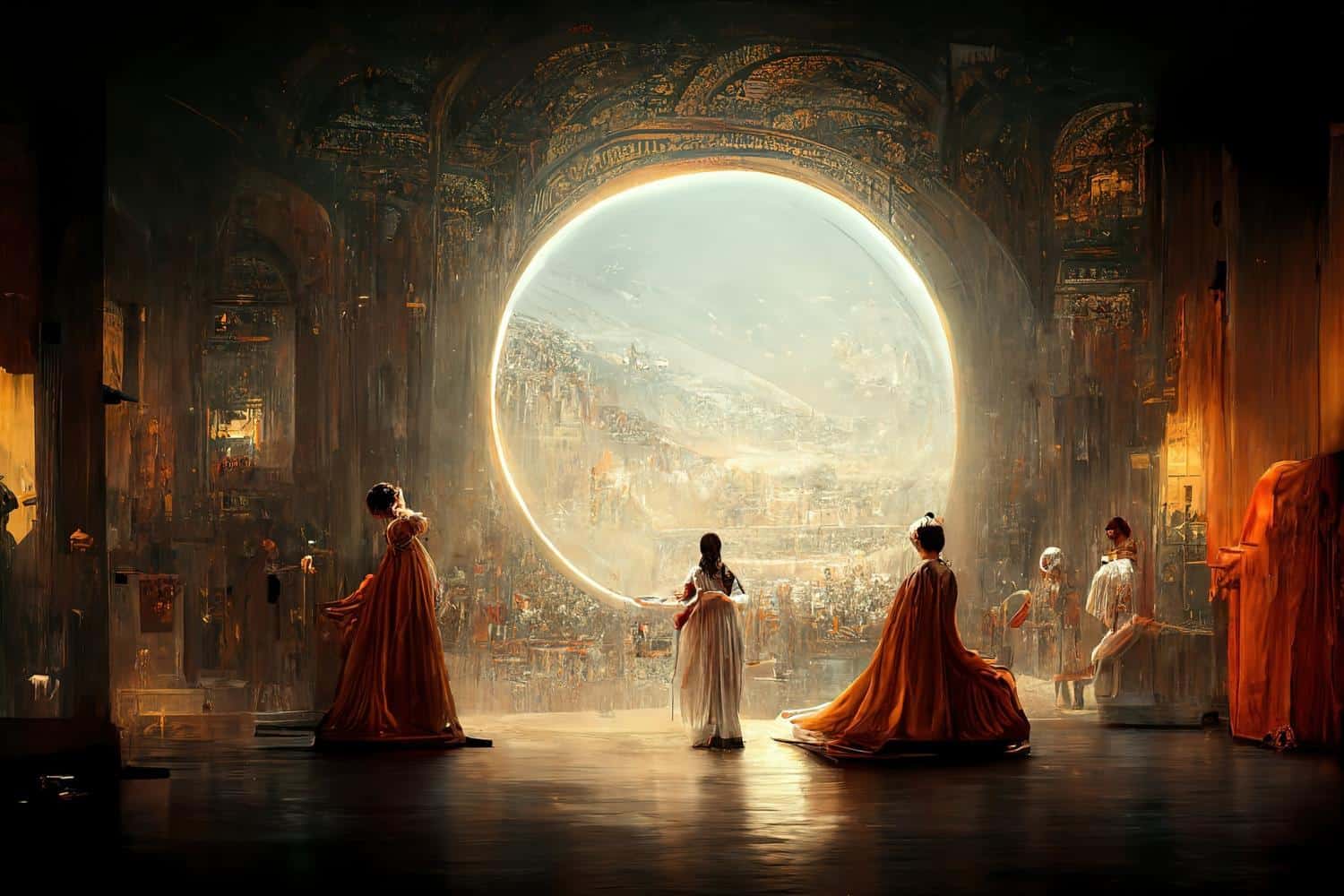When an art piece generated by an artificial intelligence (AI) won the blue ribbon for the digital painting category in the Colorado State Fair, the artists reacted the same way Go Masters did when the AI DeepMind defeated and forced the Go champion Lee Se-dol into retirement:
Absolute outrage.
Insert all the synonyms of “blasphemous” and the long tumblr rants here.
The Digital Painting

The above image was submitted by Mr Jason M. Allen from Pueblo West, Colorado, and it was entitled “Théâtre D’opéra Spatial”.
It was created with Midjourney, an artificial intelligence program that transforms lines of text into hyper-realistic graphics.
Then he printed out the image on a canvas at his local print shop and submitted it to the panel of judges.
To Mr Allen’s surprise, his work took home the blue ribbon for the digital category at Colorado State Fair, against all the emerging digital artists.
In a way, it marks the start of a new era, whereby AI-generated pieces are able to meet the standards of the human aesthetic and receive critical acclaim.

But it also spells doom for artists, as it shatters the belief that art and creativity can never be fully replicated or replaced by artificial intelligence.
You can watch this video on the jobs that would be taken over by robots soon:
When interviewed, Mr Allen defended his work, saying that he had won fair and square since he did not deceive anyone about its origins.
At the time of the submission, he wrote, “Jason M. Allen via Midjourney”.
He was honest about it, that much is true.
AI-generated or not, it is still digital.
It is still a very beautiful artwork.
The Ethics of AI-Generated Art
Midjourney isn’t the first AI capable of generating art, and it certainly won’t be the last.
Besides Midjourney, there are other tools like DALL-E 2 and Stable Diffusion which follow similar algorithms and coding to allow greenhorns to create complex, abstract, or photorealistic works by typing a few words into the text box.
The most heated argument regarding AI-generated art is that it is basically high-tech plagiarism.
The problem with these artificial intelligences is that they source and scrap millions of images from the internet, then the algorithms teach the AI how to recognise patterns and relationships from the amassed data and generate new pieces in the same style.
This means that artists who upload their works online may be training its AI counterpart, albeit unwittingly.
Although there are plenty of old pieces floating about the internet, it is undoubtedly the contemporary ones that take up the majority of the intangible web space. It is taking inspiration from current artists.
Even those who are awed by the technology and the possibilities it brings forth are worried, because there are so many ethical questions that can be raised about it.
Should Artists Be Afraid?
Probably, yeah.
One Twitter user commented, “We’re watching the death of artistry unfold right before our eyes.”
Another user was more disgusted with the fact that Mr Allen had claimed that he was an artist when technically the AI did all the work, which isn’t wrong.
On the other hand, some have argued that Mr Allen had to type a specific word prompt in order to achieve this image. While he has declined to share the exact phrasing, the French translation of his piece—“Space Opera Theatre”—offers a good clue.
The two category judges at the competition admitted that they did not know that Midjourney was an AI program at first, but said that even if they did, they would still have awarded the artwork the top prize.
After all, the category’s rules allow any “artistic practice that uses digital technology as part of the creative or presentation process”. It never stated how much the human and/or digital program has contributed to the piece.
Despite defending his work, Mr Allen raised a good point during his interview: the anger should not be directed at the technology, but the people.
He added that it is the companies who choose to replace human artistry with AI tools, not the people who created DALL-E 2 or Midjourney.
In other words, they invented the weapon, but it has always been the people who choose how it is used. It could be used to craft beautiful images in futuristic settings, but it could also be used to depict the bloodshed in war.
But here’s the thing, with every technological advancement, there has always been debates about how it will affect the art scene.
When the camera was introduced for the first time, the French poet and art critic Charles Baudelaire demeaned photography as “art’s most mortal enemy”.
It also led to the popularisation of abstract art, of the inimitable and expressed concepts, but realism still prevails. Portraits are not completely out of style yet.
The beauty about art is that it grows and changes with culture. It was never meant to be stagnant.
Mr Allen even urges artists to get over their grievances with AI, even if it only proves to be a shoddy coping mechanism.
The way artificial intelligence imitates art is terrifying, yes, but it will probably here to stay. We can’t escape this reality.
It is always important to remember that whatever the AI takes and generates, it must come from the basis of human ingenuity and creativity first.
Read Also:
- Lee Jung-Jae Wins Best Drama Actor in Emmys for Squid Game, the First in Emmy Award
- Weirdest CPR Scene from Mediacorp Medical Drama Went Viral for All the Wrong Reasons
- Single Mum Left with $17.06 in Her Bank Account After Losing Over $15K in a Day to Job Scams
- Aetos Officer Who Copied Standard Chartered Bank Robber Sentenced to 16.5 Years’ Imprisonment
- Man Steals a Fruit From HDB Altar & Returns To Pray…& Takes All Fruits Instead
Featured Image: The New York Times




